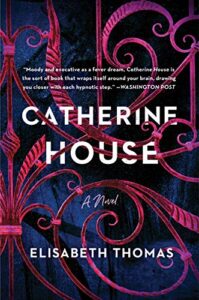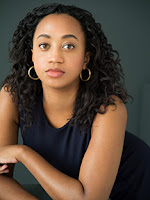By Elisabeth Thomas
 Catherine House, isolated in the backwoods of Pennsylvania, is an incubator of great minds. Its alumni include prize-winning authors, artists, inventors, Supreme Court justices, senators and two presidents.
Catherine House, isolated in the backwoods of Pennsylvania, is an incubator of great minds. Its alumni include prize-winning authors, artists, inventors, Supreme Court justices, senators and two presidents.
For the person able to survive the grueling admission process to become a student, Catherine House’s experimental, multidisciplinary education is offered without charge for tuition, room, board, textbooks or other necessities of daily living.
But this comes at a price: students must spend the entire three-year program on campus without television, contact with their families or friends off-campus or personal items such as photographs or pets.
For Ines Murillo, Catherine House is the option of last resort. Her life took a dark turn after she applied to go to Catherine House. Her only alternative was participating in a police investigation that could lead to prison.
As a student, Ines partakes of the free-flowing wine and sex, but classes — not so much. The school’s most prestigious concentration, new materials, makes Ines deeply suspicious, even as her friends and roommate aspire to be accepted into the program.
Catherine House is beautiful, sensual and disturbing at the same time. Its generous endowment notwithstanding, it is not well maintained. Wallpaper peels, armchairs sag, windows are cracked and screens torn. The toiletries provided are cheap; the food strange and hard to digest.
The school’s self-possessed director, Viktória Varga, leads regular chanting sessions that students are expected to attend. Periodically students are expected to take part in rituals that involve components of the new materials research work being done at the school. There is a cultish devotion to the school and its promise of future success.
While Ines feels like a misfit, what she doesn’t recognize is that despite their smiles and laughter, intense study sessions and drunken orgies, her fellow students share a sense of desperation about having a last chance to become brilliant. The curriculum is arcane and virtually incomprehensible.
This book is creepy and suspenseful, atmospheric and modern. Catherine House itself is as much a character here as Ines and her fellow students. This is not an action-packed mystery. There are many small mysteries here, not all of which get resolved by the end of the book. As the suspense and sense of dread rises, so does the sensuality of author Elisabeth Thomas’s descriptions of the beauty and rot of Catherine House.
Definitely a page-turner, and perfect for the Halloween season.
About the Author: Elisabeth Thomas
Elisabeth Thomas grew up in Brooklyn, where she still lives and now writes. By day, she works as an archivist for The Museum of Modern Art.
She is a graduate of Yale University, which both her grandfather and father attended. In the 1950s, her grandfather was one of only three black men in his class. Her father found the environment so difficult he dropped out. Neither wanted her to attend Yale. By the time she did, much had changed, but she also found a lot of cognitive dissonance being a black student there.
Growing up, hr favorite books were gothic classics like JANE EYRE, REBECCA and FRANKENSTEIN. In CATHERINE HOUSE, she wanted to play with some of the tropes of those stories — haunted houses, damsels in distress, strange labs with dangerous secrets “while being contemporary, lively and realistic in its own twisted way.”



